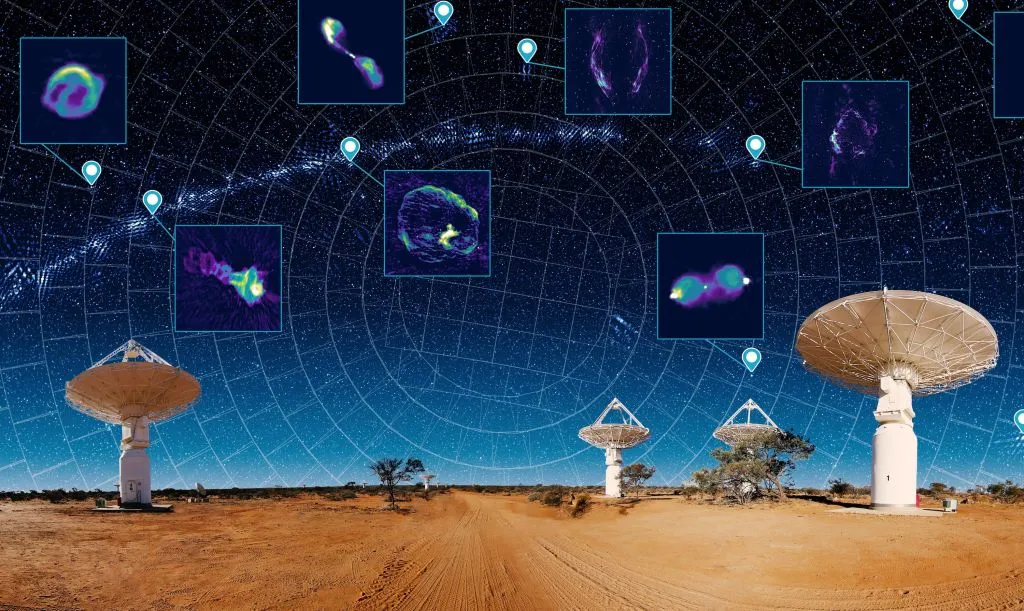Key Takeaways:
- Aussie astronomers used ASKAP radio telescope to create a detailed map of 83% of the observable universe in just 30 hours.
- The survey revealed about 3 million galaxies, with up to a million potentially unknown to science before.
- This project marks the first time all ASKAP antennas were used together, showcasing its power for future surveys.
- Unlike typical all-sky surveys that take months or years, this one was completed in weeks.
- The massive dataset (made of billions of pixels!) will be available for public exploration through CSIRO’s Data Access Portal.
In just 300 hours, Australian astronomers have mapped 83% of the observable universe.
This new survey of the sky, dubbed a “Google map of the universe” by Australia’s national science agency (CSIRO), completes a significant test for the Australian Square Kilometre Array Pathfinder (ASKAP) radio telescope, which is a network of 36 antennas based in the remote Outback of Western Australia. Even though ASKAP has been used by astronomers since 2012 to search the sky for radio signatures, such as enigmatic fast radio bursts, the telescope’s entire array of antennas has never been utilized in a single sky survey—until now.

According to a paper published in the journal Publications of the Astronomical Society of Australia, researchers mapped about 3 million galaxies in the southern sky by fully utilizing the telescope. According to the researchers, astronomy may have never heard of up to a million of these far-off galaxies, and that’s probably only the beginning. Scientists from CSIRO are already preparing for even more in-depth observations in the upcoming years, thanks to the success of this initial survey.
“For the first time, ASKAP has flexed its full muscles, building a map of the universe in greater detail than ever before, and at record speed,” lead study author David McConnell, a CSIRO astronomer, said in a statement. “We expect to find tens of millions of new galaxies in future surveys.”
Many all-sky surveys can take months, even years, to complete. CSIRO’s latest project, called the Rapid ASKAP Continuum Survey, was completed in a matter of weeks by stargazing. While each of the telescope’s 36 receivers took vast, panoramic pictures of the sky, a dedicated network of supercomputers worked double-time to combine them. The resulting map, which covers 83% of the sky, is a combination of 903 individual images, each containing 70 billion pixels. (In contrast, the highest-definition cameras available for purchase capture images with a few hundred million pixels).
The CSIRO Data Access Portal will provide the public with public access to all of these images while researchers examine the findings and prepare for their upcoming sky-charting expeditions.

